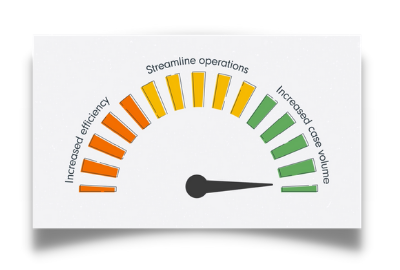The rise of the robots
Turnkey news
R3 Recovery Newsletter Feature – June 2021
Darren White explains robotic process automation for the insolvency workplace.
Turnkey is delighted to feature in R3 Recovery News.
In my recent article for RECOVERY (The future of insolvency is in the cloud, page 26, Summer 2021), I discussed among other cloud benefits, the use of robotic process automation (RPA) for dealing with tasks that would be repetitive in nature and an inefficient use of both the time and skills set of your highly trained insolvency staff. Taking this into account, let us explore how the application of robotics within the insolvency industry will benefit firms of all sizes.
Let’s first define what we are referring to when we refer to a robot, this is not an actual physical entity but a piece of software that emulates the concept of a digital worker. The ‘bot’ is ‘taught’ tasks, processes and activities and can be executed repeatedly. It can also make simple decisions based on pre-set business rules and will only require human intervention for more complex decision making, allowing your staff to concentrate on the more value-added tasks rather than tied up with case admin.
RPA – Robotic Process Automation
So, what are the applications of RPA to the insolvency sector and what are the benefits?
Many insolvency processes are by nature manual, repetitive and inefficient and therefore perfect candidates for automation.

The robotic process starts with a business analyst ‘sitting’ alongside your staff and observing and detailing every step of the process carried out manually, this is known as a deep dive. The robot can then be programmed to automate any process where the member of staff uses a computer system, which these days is almost all tasks.
If during a process there is an intervention required by staff – maybe to approve a process or make a decision to allow the robot to continue – then these safeguards can be built in, thus enabling the IP to be sure that regulations are being followed correctly to ensure compliance.
Other processes are also ripe for automation such as bank reconciliations where some IPs are having to manually reconcile hundreds if not thousands of bank accounts, often on a monthly basis, or progress report generation where a document must be completed but often requires information to be input from a number of different systems.
Robotic Process Automation – The Benefits
The benefits of RPA should start to become clear as you consider the potential. Firstly, the robot will generally work anywhere between 5 and 20 times the speed of a human, and secondly the time to process will be cut dramatically when combined with the 24/7 nature of RPA. This will mean a revolution in efficiency for the IP. As more and more IPs are charging fees on a fixed-cost basis, the greater efficiency savings will mean better returns for both the IP and key stakeholders.
Today’s younger recruits, graduates and school leavers will have an expectation of work being an extension of their digital lives, stuffing envelopes and data entry will not meet this expectation, therefore innovative technology such as RPA could help firms attract and retain top talent.

Not only will RPA provide efficiency saving but it can also help improve quality as a robotic process will be carried out in an identical fashion every time it runs, that often cannot be said for the traditional way of working meaning that compliance will improve.
A future development of automation will be the addition of document understanding and artificial intelligence. Using machine learning a robot can be guided through complex tasks and make decisions normally reserved for a human. In relation to insolvency, such technology could be deployed by the IP to aid investigation and detect potential fraud.
Finally, it’s worth noting that the robot will NOT replace human decision making but become an aid and support mechanism to help staff better manage workloads and deliver better outcomes for their clients.
Learn more about automating your insolvency processes.

